Targeting TLR4 during vaccination boosts MAdCAM-1+ lymphoid stromal cell activation and promotes the aged germinal center response
- PMID: 35522725
- PMCID: PMC7612953
- DOI: 10.1126/sciimmunol.abk0018
Targeting TLR4 during vaccination boosts MAdCAM-1+ lymphoid stromal cell activation and promotes the aged germinal center response
Abstract
The failure to generate enduring humoral immunity after vaccination is a hallmark of advancing age. This can be attributed to a reduction in the germinal center (GC) response, which generates long-lived antibody-secreting cells that protect against (re)infection. Despite intensive investigation, the primary cellular defect underlying impaired GCs in aging has not been identified. Here, we used heterochronic parabiosis to demonstrate that GC formation was dictated by the age of the lymph node (LN) microenvironment rather than the age of the immune cells. Lymphoid stromal cells are a key determinant of the LN microenvironment and are also an essential component underpinning GC structure and function. Using mouse models, we demonstrated that mucosal adressin cell adhesion molecule-1 (MAdCAM-1)-expressing lymphoid stromal cells were among the first cells to respond to NP-KLH + Alum immunization, proliferating and up-regulating cell surface proteins such as podoplanin and cell adhesion molecules. This response was essentially abrogated in aged mice. By targeting TLR4 using adjuvants, we improved the MAdCAM-1+ stromal cell response to immunization. This correlated with improved GC responses in both younger adult and aged mice, suggesting a link between stromal cell responses to immunization and GC initiation. Using bone marrow chimeras, we also found that MAdCAM-1+ stromal cells could respond directly to TLR4 ligands. Thus, the age-associated defect in GC and stromal cell responses to immunization can be targeted to improve vaccines in older people.
Conflict of interest statement
Competing interests: The authors declare that they have no competing interests.
Figures
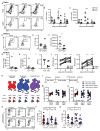
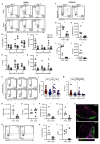
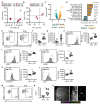

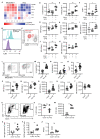
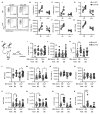
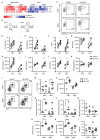
Similar articles
-
Early T Follicular Helper Cell Responses and Germinal Center Reactions Are Associated with Viremia Control in Immunized Rhesus Macaques.J Virol. 2019 Feb 5;93(4):e01687-18. doi: 10.1128/JVI.01687-18. Print 2019 Feb 15. J Virol. 2019. PMID: 30463978 Free PMC article.
-
Thymic stromal lymphopoietin improves protective immunity of the SARS-CoV-2 subunit vaccine by inducing dendritic cell-dependent germinal center response.J Virol. 2025 Apr 15;99(4):e0232324. doi: 10.1128/jvi.02323-24. Epub 2025 Mar 4. J Virol. 2025. PMID: 40035515 Free PMC article.
-
Toll-Like Receptor 4 Regulates Rabies Virus-Induced Humoral Immunity through Recruitment of Conventional Type 2 Dendritic Cells to Lymph Organs.J Virol. 2021 Nov 23;95(24):e0082921. doi: 10.1128/JVI.00829-21. Epub 2021 Oct 6. J Virol. 2021. PMID: 34613801 Free PMC article.
-
Stromal cell control of conventional and ectopic germinal centre reactions.Curr Opin Immunol. 2020 Jun;64:26-33. doi: 10.1016/j.coi.2020.03.007. Epub 2020 Apr 20. Curr Opin Immunol. 2020. PMID: 32325390 Review.
-
Mechanisms underpinning poor antibody responses to vaccines in ageing.Immunol Lett. 2022 Jan;241:1-14. doi: 10.1016/j.imlet.2021.11.001. Epub 2021 Nov 10. Immunol Lett. 2022. PMID: 34767859 Free PMC article. Review.
Cited by
-
Immunological factors linked to geographical variation in vaccine responses.Nat Rev Immunol. 2024 Apr;24(4):250-263. doi: 10.1038/s41577-023-00941-2. Epub 2023 Sep 28. Nat Rev Immunol. 2024. PMID: 37770632 Review.
-
Cellular senescence is a key mediator of lung aging and susceptibility to infection.Front Immunol. 2022 Aug 31;13:1006710. doi: 10.3389/fimmu.2022.1006710. eCollection 2022. Front Immunol. 2022. PMID: 36119079 Free PMC article. Review.
-
Understanding and improving vaccine efficacy in older adults.Nat Aging. 2025 Aug;5(8):1455-1470. doi: 10.1038/s43587-025-00939-6. Epub 2025 Aug 14. Nat Aging. 2025. PMID: 40813812 Review.
-
Tfh cells and the germinal center are required for memory B cell formation & humoral immunity after ChAdOx1 nCoV-19 vaccination.Cell Rep Med. 2022 Dec 20;3(12):100845. doi: 10.1016/j.xcrm.2022.100845. Epub 2022 Nov 15. Cell Rep Med. 2022. PMID: 36455555 Free PMC article.
-
Disorganization of secondary lymphoid organs and dyscoordination of chemokine secretion as key contributors to immune aging.Semin Immunol. 2023 Nov;70:101835. doi: 10.1016/j.smim.2023.101835. Epub 2023 Aug 29. Semin Immunol. 2023. PMID: 37651849 Free PMC article. Review.
References
-
- Ciabattini A, Nardini C, Santoro F, Garagnani P, Franceschi C, Medaglini D. Vaccination in the elderly: The challenge of immune changes with aging. Semin Immunol. 2018;40:83–94. - PubMed
-
- Goodwin K, Viboud C, Simonsen L. Antibody response to influenza vaccination in the elderly: a quantitative review. Vaccine. 2006;24:1159–1169. - PubMed
-
- Govaert TM, Thijs CT, Masurel N, Sprenger MJ, Dinant GJ, Knottnerus JA. The efficacy of influenza vaccination in elderly individuals. A randomized double-blind placebo-controlled trial. JAMA. 1994;272:1661–1665. - PubMed
-
- Weinberger B, Grubeck-Loebenstein B. Vaccines for the elderly. Clin Microbiol Infect. 2012;18(Suppl 5):100–108. - PubMed
Publication types
MeSH terms
Substances
Grants and funding
- BBS/E/B/000C0407/BB_/Biotechnology and Biological Sciences Research Council/United Kingdom
- MR/V009591/1/MRC_/Medical Research Council/United Kingdom
- 637801/ERC_/European Research Council/International
- BB/N011740/1/BB_/Biotechnology and Biological Sciences Research Council/United Kingdom
- MC_U105178805/MRC_/Medical Research Council/United Kingdom
LinkOut - more resources
Full Text Sources
Medical
Miscellaneous

